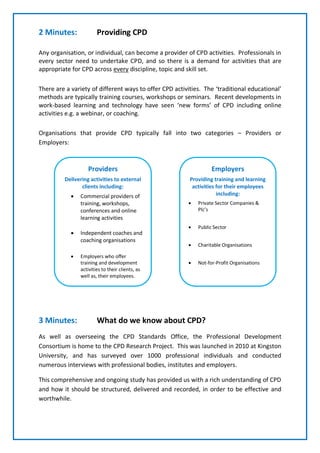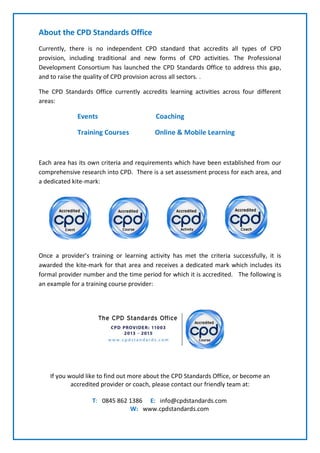Continuing professional development (CPD) involves intentionally developing knowledge and skills needed for one's profession. CPD is expected by most professional bodies and employers and can take various forms from training to self-directed learning. Research shows that CPD is more effective when it is social, recognized, and high-quality. The Professional Development Consortium aims to improve CPD through research, raising quality standards, and recognizing successful CPD.




